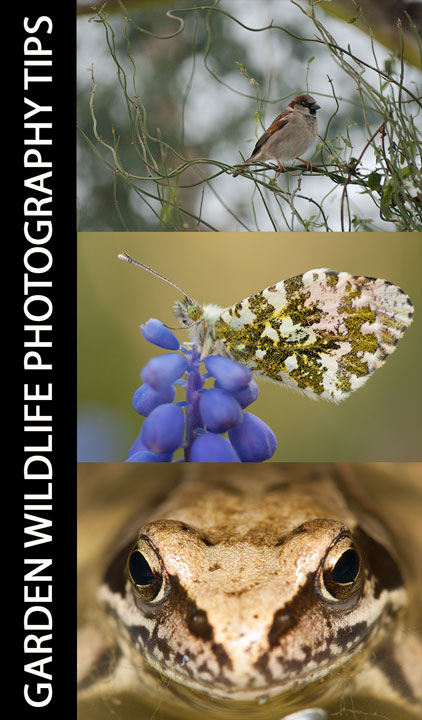Garden Wildlife Photography Tips
When you think about wildlife photography, most people would think of visiting a wildlife reserve, national park, or just getting out in the wilds. However, you can take great wildlife photos much closer to home.
There are quite a few benefits of photographing wildlife in your garden. The most obvious one being that you don't have to travel anywhere to get there. It's also much more comfortable - if you get thirsty or hungry you can just pop inside for a drink or snack. You don't need to carry a large amount of equipment with you - you can just fetch what you want when you want it.
It also enables you to do a quick bit of wildlife photography whenever it's convenient. Of course you can't guarantee that there will always be an obvious subject out there whenever you want it. But that would be just the same if you were traveling many miles to a nature reserve.
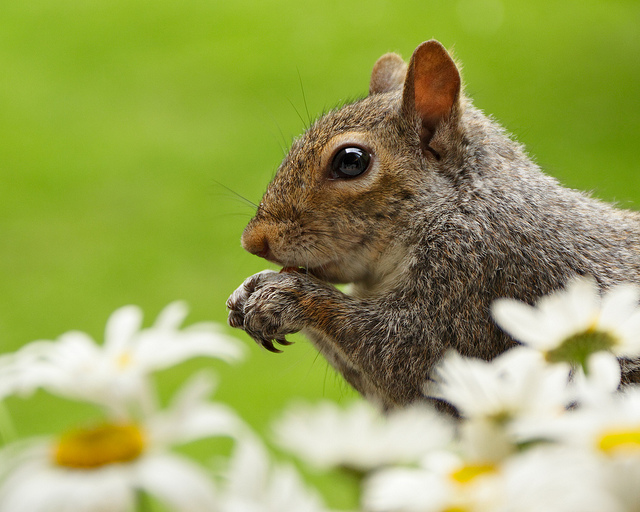
Squirrel eating a nut in a garden by James Blunt on Flickr (licensed CC-BY-ND)
In nature, habitats tend to cover large areas. But in your garden you can have a wide range of habitats in just a small area. A couple of trees can become a woodland, the lawn becomes fields, and a small pond becomes a lake (well maybe not quite, but near enough). This allows you to attract a large variety of different wildlife to your garden.
When thinking about wildlife photography in your garden, you need to think about the type of wildlife you would like to attract, and then plan your garden appropriately. If you want to photograph birds, then trees / shrubs for them to perch / hide in, water to drink and wash in, and a good supply of food will all help bring them to your garden.
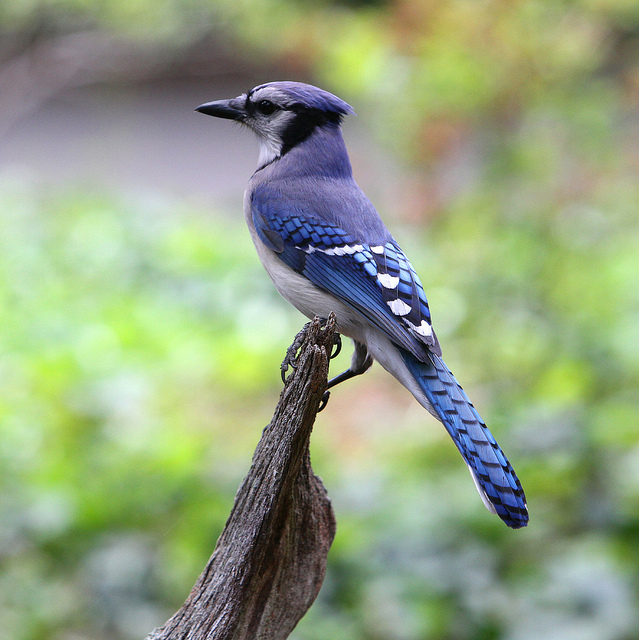
American Blue Jay by anoldent on Flickr (licensed CC-BY-SA)
You can go further than this, if you're looking to photograph a particular type of bird, for example. Look up what it likes to eat, what sort of habitat it likes, and then make sure that your garden will cater to its needs.
Enticing animals into your garden to feed can certainly help you get some photos of them. But if you can get them to live in your garden, then this opens up even more regular photo opportunities. Putting up nest boxes for birds or bee houses for solitary bees, for example.
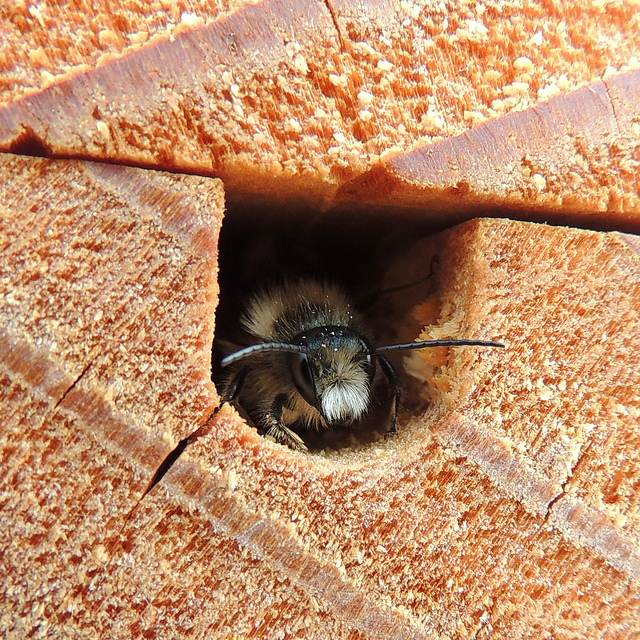
Male red mason bee (Osmia bicornis), Sandy, Bedfordshire by Orangeaurochs on Flickr (licensed CC-BY)
Do be mindful not to disturb animals when they're nesting though. For example, if you're not usually out in the garden much, but then go out when you get some nesting birds with chicks, the adults will be very wary of you and may stay away from the nest. This could result in the chicks missing out on vital feeds, or even the adults deciding to abandon the nest altogether.
If you're out in the garden regularly though before they choose the nest site, then they'll be much more likely to tolerate you being around, so long as you keep your distance.
If you're after frogs, then a small (or large) pond is a great idea. Put piles of rocks nearby that the frogs can hide under - they don't spend all their time in the water. A pond is also great for many insects, such as dragonflies, damselflies, and hoverflies. And these in turn attract other animals that feed on them.
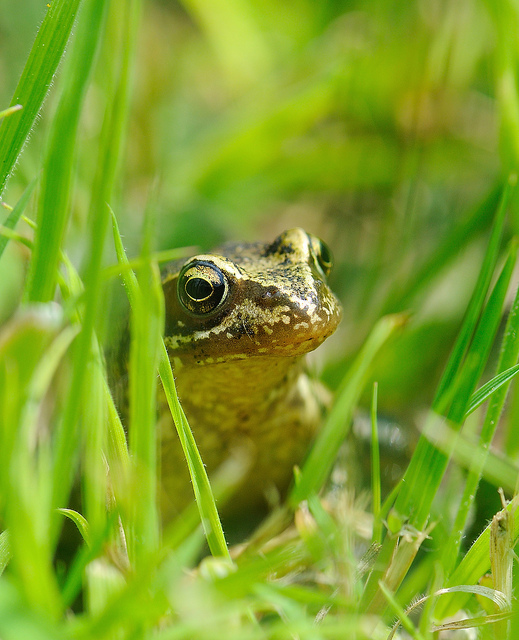
Frog by Kev Chapman on Flickr (licensed CC-BY)
A corrugated metal sheet laid out in an area that gets some sunlight can prove a magnet for snakes and lizards. As they are cold blooded, they need to warm up at the start of each day. The sheet heats up much faster in the sun than the surrounding ground. This makes it an ideal place for them to hide under, out of the sight of potential predators above.
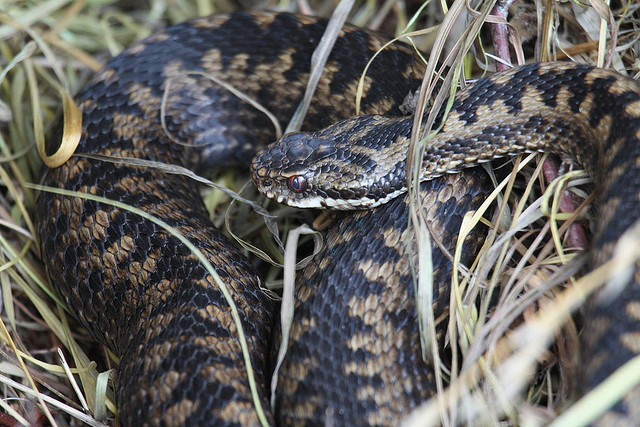
Adder by Alastair Rae on Flickr (licensed CC-BY-SA)
For butterflies and caterpillars think about the types of plants you have in your garden. While flowers attract butterflies with their nectar, think also about plants that the caterpillars eat. Many have quite specialized tastes. By planting their foodplants you can attract butterflies looking for somewhere to lay their eggs. And it also gives you the chance to record the complete life-cycle, from caterpillar to butterfly.

Roosting butterfly by Martin Cooper on Flickr (licensed CC-BY)
As well as thinking about the wildlife you would like to attract when setting up your garden, also think about it from a photographic perspective. For example, when putting up a bird feeder, you want to place it somewhere that you can get reasonably close to without scaring the birds off. If you can place it near a point where you can easily photograph from the house, so much the better.
A bush growing near the feeder will provide a nice place for birds to perch, allowing you to get nice, natural shots of them. You may want to trim back parts of the bush to reduce visual clutter and make it easier to get a clean shot. You can even go further and just use a cut branch placed near the feeder for the birds to use. This results in much more appealing photos than a bird sitting at a plastic feeder.
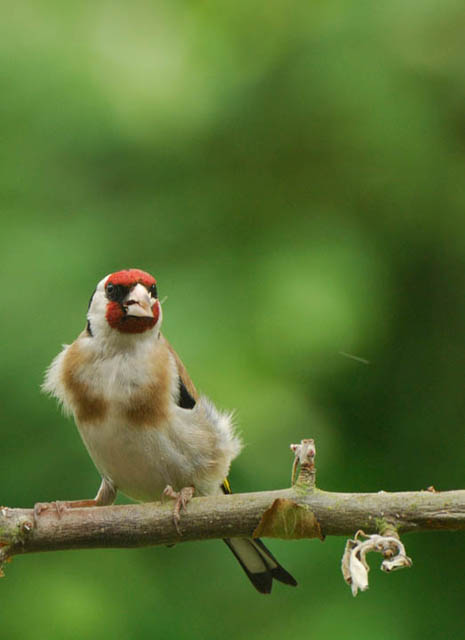
European Goldfinch perching on a twig
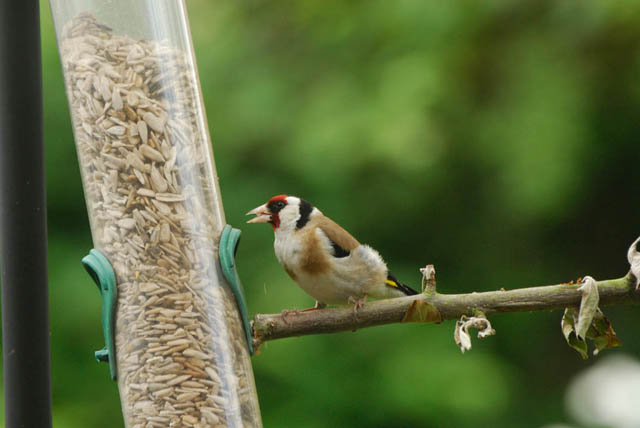
The bird was actually perching on a stick attached to a feeder
Think about the backgrounds too. Having climbing plants covering walls and fences will usually provide a nicer, more natural looking backdrop than bare brick or wood.
Although photographing wildlife in your garden allows you to get pretty close, for most subjects you're still going to need a telephoto lens (300mm or greater) if you want to capture them at a reasonable magnification. Smaller subjects, such as insects, will generally let you get a bit closer, but due to their small size the maximum magnification ratio of the lens can become an issue. For these subjects a macro lens is highly recommended.
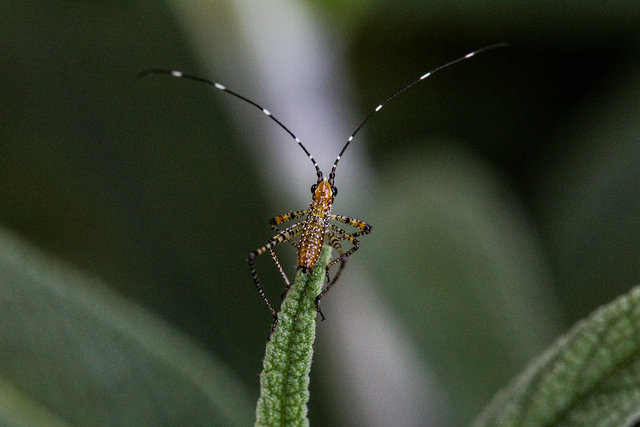
Mexican Bush Katydid by siamesepuppy on Flickr (licensed CC-BY)
For photographing birds, you can use your house as a hide. It is best (though not essential) to shoot through an open window or door as shooting through the glass of a window can reduce the contrast of an image. You may have to deal with reflections caused by the window too if shooting through the glass.
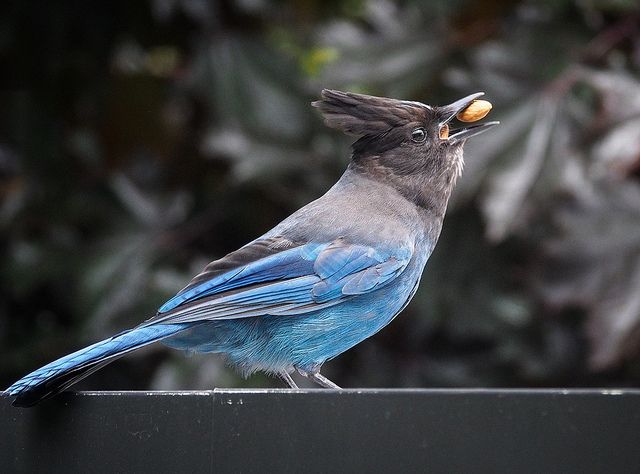
A Caching Steller's by Ingrid Taylar on Flickr (licensed CC-BY)
If you have a door that can slide open, this is perfect as it will let you shoot to the left or right without getting in your way. Whereas with a window you can only shoot in the direction that it opens.
It is best to open the window or door, then wait for birds to arrive. If you open the window / door after the birds have arrived, then you'll likely scare them off. So long as you're not too noisy, and don't move around too much, the birds should ignore you.
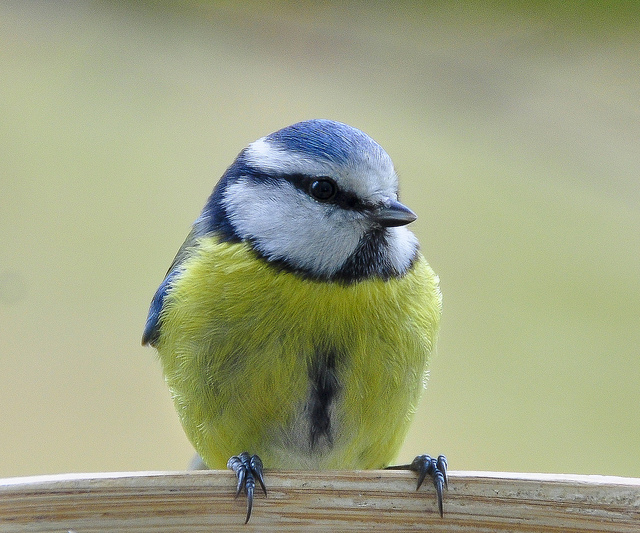
Blue Tit close-up by keith ellwood on Flickr (licensed CC-BY)
Lastly, if you don't have much wildlife in your garden at the moment, making it wildlife friendly won't change the situation overnight. You need to think of it more as a long term project. The results can be great, both for your photography, and also just for the general enjoyment of wildlife watching.
